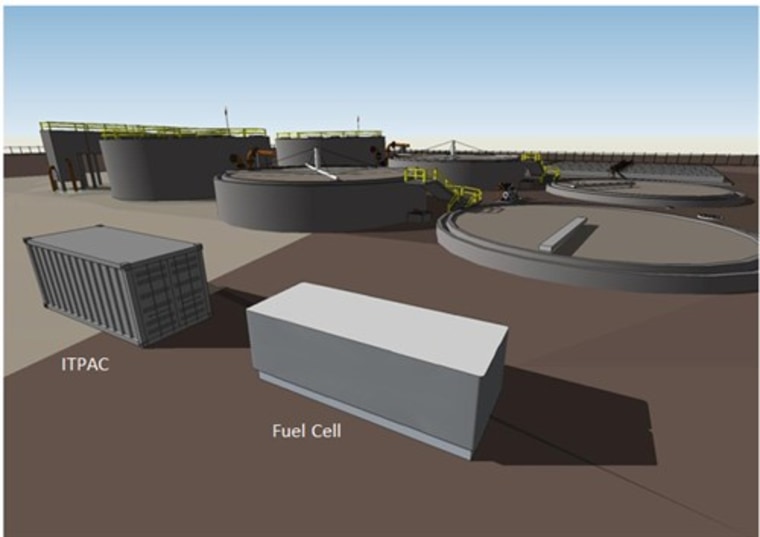Microbes feasting on raw sewage at a wastewater treatment plant will soon help power the cloud, thanks to a Microsoft project that will use biogas generated by the little bugs to run a data center.
Data centers are typically massive banks of servers that keep the Internet humming along nicely. They handle the flow of digital information when you order a song on iTunes, check your Facebook, send an instant message, or post on Twitter, for example.
Worldwide, these warehouses of servers use the equivalent output of 30 nuclear power plants, according to the New York Times.
The Microsoft-backed project announced Monday is a test of the company’s Data Plant concept that aims to integrate energy hungry data centers with sources of fuel as a means to increase energy security by freeing itself from the electric grid and meet a company goal of carbon neutrality.
“The intriguing thing about biogas is it is sustainable,” Sean James, a senior research program manager for the Microsoft Data Center Advanced Development team, told NBC News.
“Wherever there are people, there is demand for data, but wherever there are people there is going to be this supply of biogas, so it is a full circle when it comes to the supply and demand chain,”
The biogas is generated by two anaerobic digesters at a wastewater treatment plant in Cheyenne, Wyo. It is currently flared off, which is a waste of useable energy. The Microsoft project will capture the gas, clean it up a bit, and feed it to a fuel cell that turns it into electricity.
Any residual power that the fuel cell generates but is not used by the data center will be routed back to the wastewater treatment facility to offset its energy costs, James explained.
In addition, heat generated from the fuel cells will be routed back to wastewater treatment plant to keep the microbes at their optimal temperature for munching on sewage.
The $5.5 million pilot project will provide 200 kilowatts of power for a modular data center, a fraction of the 30 billion watts of electricity experts believe are required to run the world’s data centers.
But the concept is scalable to the “literally thousands of sites” around the world where fuel resources are going to waste, Brian Janous, a data center utility architect at Microsoft, told NBC News. Data Plants can be scaled to fit those available resources, meaning less fuel is wasted.
“We may go into a region and say we need 30 megawatts of potential capacity to serve customer demand in that region,” he explained. “Well, it doesn’t have to be a single 30 megawatt data center. It could be multiple data centers that are sized uniquely to meet whatever the available fuel resources are.”
The pilot project gets underway in March 2013. If it works as envisioned, it could something to Tweet about.
John Roach is a contributing writer for NBC News Digital. To learn more about him, check out his website. For more of our Future of Technology series, watch the featured video below.
